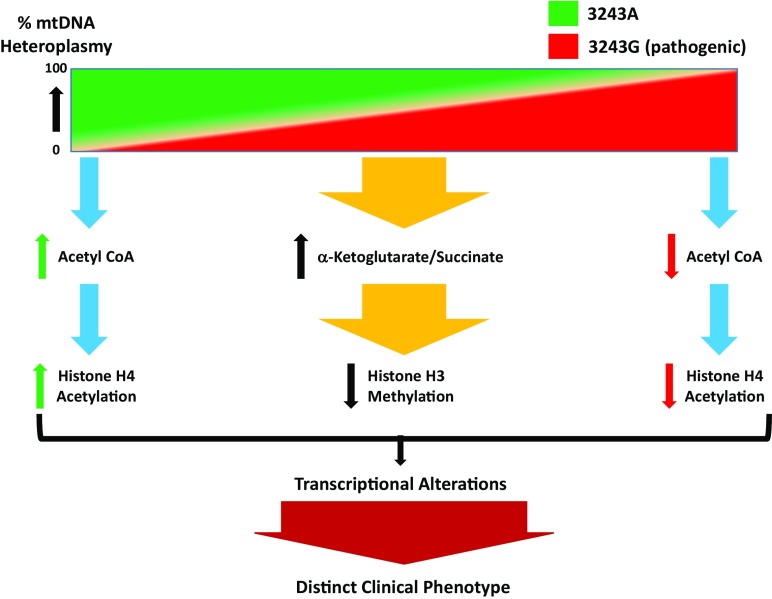Fig. 1.
Influence of mtDNA heteroplasmy on clinical phenotype via changes on metabolic programming that impact the epigenome and nuclear gene expression. As shown in Kopinski et al. (1), different levels of heteroplasmic tRNALeu(UUR) m.3243 A > G mutation change levels of acetyl-CoA available for histone acetylation (histone H4). Decreased and increased levels of m.3243G heteroplasmy are linked with greater and lower levels of acetyl-CoA, respectively, which change levels of histone acetylation. Interestingly, intermediate levels of m.3243G heteroplasmy were associated with increased levels of αKG/succinate ratios and decreased histone (histone H3) methylation. Collectively, these epigenetic changes influence nuclear gene expression (transcriptional alterations) that conveys the distinct clinical phenotypes associated with heteroplasmic tRNALeu(UUR) m.3243 A > G mtDNA mutations.

